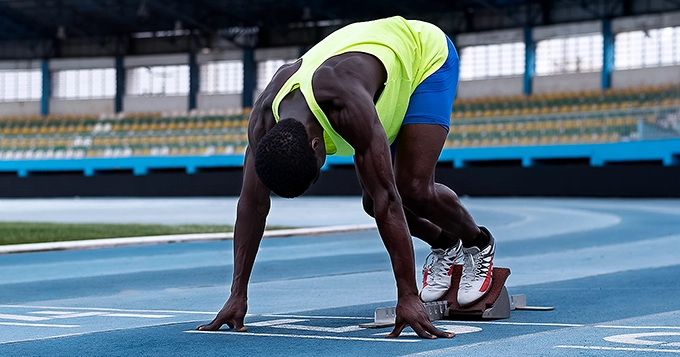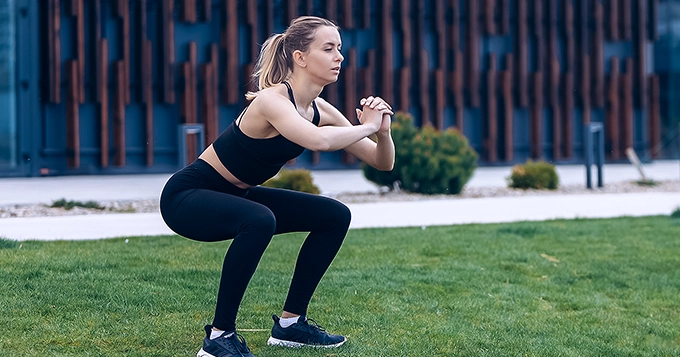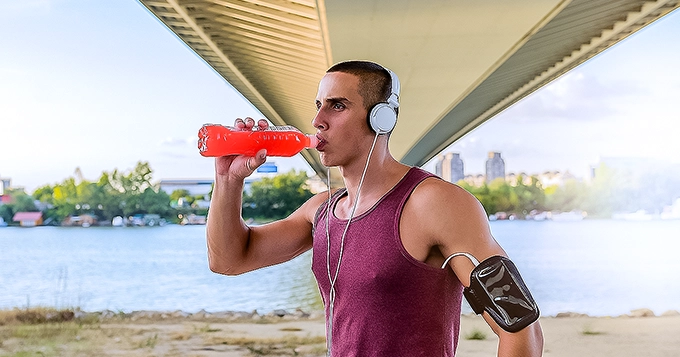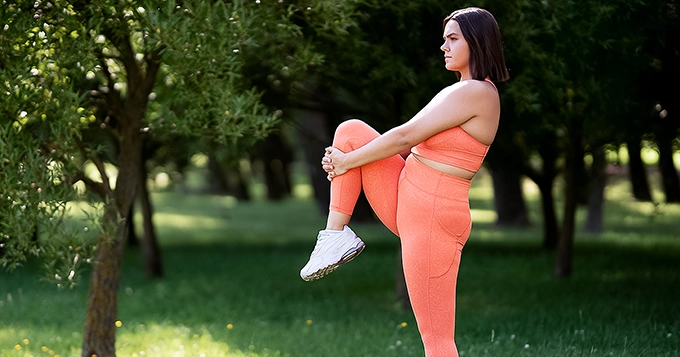The secret to success in long-distance running is not really a secret. We’re here to share the 7 secrets you can use to elevate your runs.
Consistency
Consistency is an essential pillar to reach your fitness goal. There are no shortcuts to long distance running success. You realize that it’s not the runs you do every once in a while. It’s not the food that you eat every once in a while, it’s the little things that you do every day that make you successful.
Long distance running builds your endurance, but your performance will decline if you begin to miss sessions.
Consistency in long distance running is crucial as it allows for physical adaptation, mental toughness, injury prevention, skill development, progress monitoring, habit formation, and optimal performance. It builds mental resilience by teaching runners to push through discomfort and boredom while also refining pacing strategies and techniques.
Consistent training establishes a routine, making prioritizing running and tracking progress easier, ultimately leading to improved race-day performance and long-term success.
Strength Training
Sometimes, the endurance of your heart and lungs increases quickly, but the development of muscle strength in your legs progresses at a slower pace.
By strengthening muscles, tendons, and ligaments, strength training lowers the chance of overuse injuries, which are common in long-distance running.
Stronger muscles allow for more powerful strides, better form retention during fatigue, and increased ability to navigate challenging terrain, ultimately translating to faster race times and sustained performance over long distances.
Additionally, strength training aids in the recovery process, helping long distance runners rebuild strength and mobility after injury.
Some strength training exercises you can incorporate are:
- Lunge and overhead reach
- Squat to stand with overhead reach
- Crossback lunge
- Planks
- Single-leg deadlift
- Single-leg glute bridge
- Goblet squats
- Barbell squats
- Bulgarian split squats
- Tricep dips
Invest in High-Quality Running Gear
Finding the right equipment, whether it be your running shoes, running apparel, and some accessories you’ll use for the miles you’ll run, is one of the secrets behind long-distance running success.
Running Apparel
The right apparel is essential for long-distance running to ensure better performance, maximum comfort, and overall enjoyment. Clothes that fit correctly and are designed specifically for running can significantly affect how you feel and perform while you’re doing the activity.
Running clothes are made to keep you cool, which is important when working out hard. They use fabrics like nylon that soak up sweat, pulling it away from your skin to keep you comfy and dry.
Running Shoes
Running shoes are important because they provide crucial support, cushioning, and stability to runners, helping to prevent injuries and enhance performance. Properly fitting running shoes absorb impact, reduce strain on muscles and joints, and provide traction, allowing you to move comfortably and efficiently on various surfaces.
Running Accessories
Running accessories such as compression socks and GPS devices offer significant benefits to runners. Compression socks aid in improving blood circulation, reducing muscle fatigue, and preventing injuries like shin splints and Achilles tendonitis by providing graduated compression. On the other hand, GPS devices, including running watches and smartphones, provide accurate tracking of distance, pace, route, and other performance metrics, allowing runners to monitor progress, set goals, and explore new routes safely.
Fueling
Proper Diet
Another secret behind long-distance running success is eating a diet that is well-balanced in terms of protein, fats, and carbohydrates.
Make sure your meals include the following basic components:
- Lean protein such as fish, poultry, lentils, beans, and tofu
- Healthy fats such as olive oil, nuts and avocado
- Healthy carbohydrates such as fruits, veggies, rice, whole grain bread or pasta, and oatmeal
In general. individuals who run or jog should consume between 60% and 70% of their calories from carbohydrates, with the remaining 15% to 20% coming from lean protein and healthy fats. However, individual needs can differ, so paying attention to your body’s signals and modifying your macronutrient intake based on certain factors like training intensity, duration, and personal preferences is critical.
Proper Hydration
Drinking lots of fluids before, during, and after runs is needed for maintaining good performance and preventing dehydration.
- Pre-hydrate: Consider drinking 17-20 fl. oz. about 2 hours before your run so you’ll start properly hydrated.
- Maintain hydration: Drink 5–10 fl. oz. of water every 15 to 20 minutes while running.
- Drink after: Drink 16–24 fl. oz. of water for every pound lost while running. This gets your fluid levels back to normal and can help with recovery.
Listen to Your Body
Running is a high-intensity sport. Running multiple days out of the week can strain the body, which is why you need to give it enough time to repair itself. It should be a priority for every runner to get at least 7 to 9 hours of sleep per night. This keeps you in top shape, helps you prevent injuries, and improves your training runs.
Listen to your body. If your body is starting to feel overwhelmed by the load or volume of training, take a day off. Realize that this will not set you back but enhance your ability to improve.
There are actually more reasons why you need to listen to your body than just getting proper rest.
By listening to your body, you’ll know when you might need to modify something on your training plan if something is not working out for you.
You should constantly assess how you have improved, what has held you back, what workouts you could have done better, and what training runs really helped you progress. At this point, a running coach might also be of great assistance, but if that’s not possible for you, go with your instincts.
Pace Yourself
Lots of beginners in running tend to kick off at an overly speedy pace. Then, they hit a wall realizing they can’t keep up that speed for the entire distance, leading them to either walk the rest or give up early.
Pacing yourself helps conserve energy and prevent burnout over long distances. It also reduces your risk of injury. Pushing yourself too aggressively early on can lead to overexertion and increased susceptibility to muscle strains, joint pain, or other injuries.
Here are 3 tips for pacing yourself on the run:
1. Slow down.
It may seem counterintuitive, but dialling back is the initial move toward getting a grip on your pace. Starting too hard can turn running from a gratifying to a frustrating activity. It’s important to start slow or run at a pace where you can easily converse. That way, you complete your run feeling like you could keep going.
You can slowly pick up your speed as you get accustomed to covering longer distances at this relaxed pace. Eventually, aim for a challenging pace you can sustain throughout the entire run.
2. Check your breath.
Paying attention to your breath is one of the best ways to measure the pace, effort, and intensity of your run. You shouldn’t be having trouble breathing. Try to take easy inhales every three to four steps, followed by relaxed exhales every three to four.
3. Don’t compare yourself.
It’s important to recognize that running shorter distances or at a slower pace is perfectly acceptable, especially if you’re just starting out. Ultimately, what matters most is your personal progress. The only benchmark you should aim to surpass is your own.
Warm Up and Cool Down
Warm-up and cool-down routines are essential components of long distance running training for several reasons.
Warm-up:
- Gradually increases your blood flow, heart rate, and muscle temperature. This helps to improve muscle elasticity and flexibility, reducing the risk of injury during your session.
- Primes your neuromuscular system, enhancing coordination and muscle activation, which can improve running efficiency and performance.
Warm-up exercises include knee-to-chest, heel-to-butt, jumping jacks, and arm swings.
Cool-down:
- Gradually lowers your heart rate and eases your body back to a resting state. This lowers the accumulation of lactic acid in muscles and avoids post-exercise stiffness and pain, which promotes recovery.
- Allows for the gradual dissipation of body heat, helping to regulate body temperature and prevent overheating.
Cool-down exercises include a slow jog, hip flexor stretch, hamstring stretch, and quad stretch.












